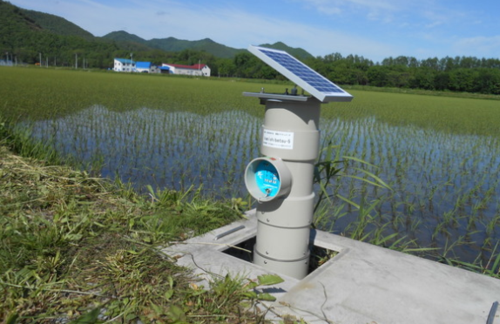
The Japanese government will support the use of digital technologies such as satellite imagery and artificial intelligence (AI) to monitor leaks in water supply and drainage pipes, the Nihon Keizai News reported on July 7, the aim is to reduce the cost of monitoring leaks and use them in post-disaster reconstruction, with a view in principle to extending them nationwide within five years. Japanese Prime Minister Fumio Kishida on the 8th also said the government will advance this initiative.
So far, for water pipe leakage, is generally to take manual monitoring, such as investigators through the sound of water pipes to judge. In the future, satellites will be able to send out electromagnetic waves that capture the reflection of water in the ground, and then use artificial intelligence to analyze it and locate the leak.
In the Toyota Aichi Prefecture trial, the time needed to detect leaks was about a tenth shorter, according to the Cabinet Office. Prime Minister Kishida will go to Toyota on the 8th to inspect the work of the water supply and drainage authority.
Research will also be carried out on the installation of vibration sensors on water pipe valves and the analysis of vibration data sent at any time, so as to identify suspected leakage areas as soon as possible.
The Japanese government plans to include the use of these technologies in water management manuals. To promote the drainage pipe digital conversion as a social capital construction of the conditions and additional factors, such as the comprehensive allocation, so as to encourage the financial perspective.
According to Ministry of Health, Labour and Welfare statistics, the length of water pipes in Japan reached 740,000 km, equivalent to around the Earth’s equator 18.5 times. As aging intensifies, the proportion of water pipes that exceed the legal life span of 40 years reached an all-time high of 22.1% in 2021. It is urgent to improve the efficiency of water leakage monitoring.
Disaster response is another. Some sources said that when the 2007 Noto earthquake occurred in January, it took time to investigate the leak, resulting in a delay in the repair of the water mains. If you can use digital technology to quickly identify the leak area, you can repair the water supply and drainage pipes as soon as possible.
In August, the Japanese government will revise basic plans for water circulation related to the construction of waterway infrastructure, including measures to strengthen the seismic capacity of water supply and drainage pipelines. The Japanese government has proposed that all local governments within the 2024 develop plans to strengthen the seismic capacity of water supply and sewerage pipelines.